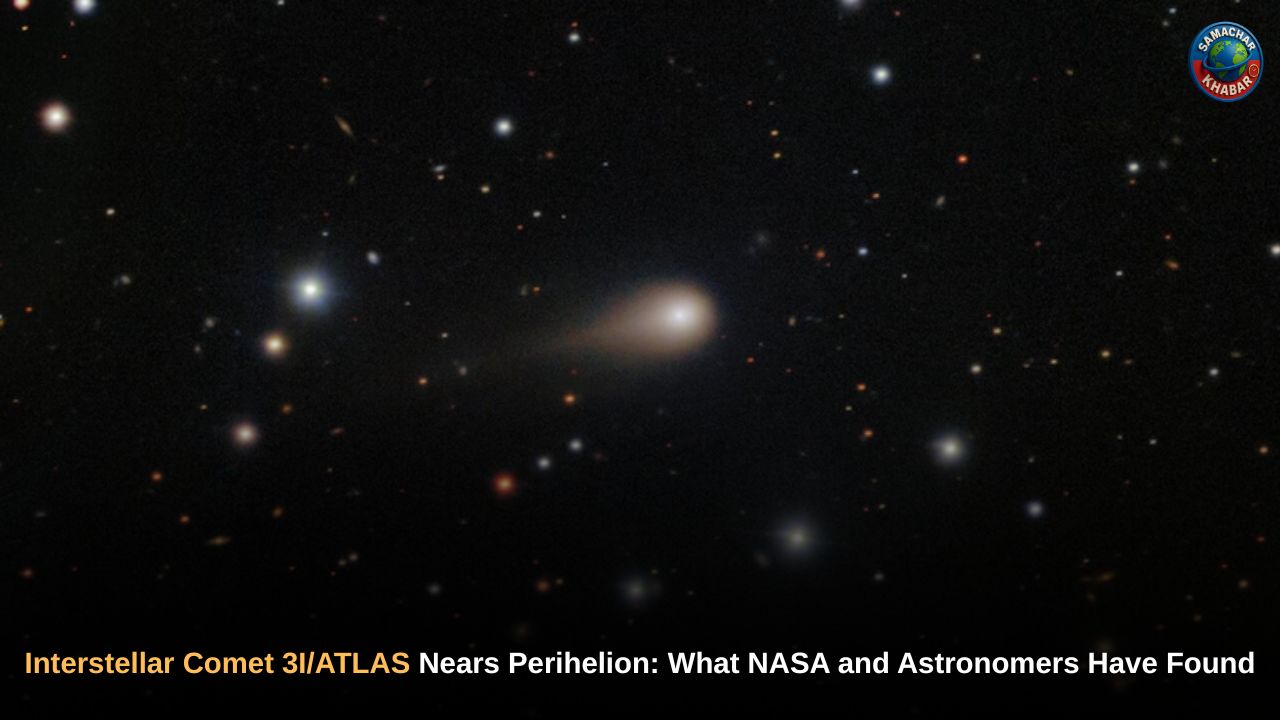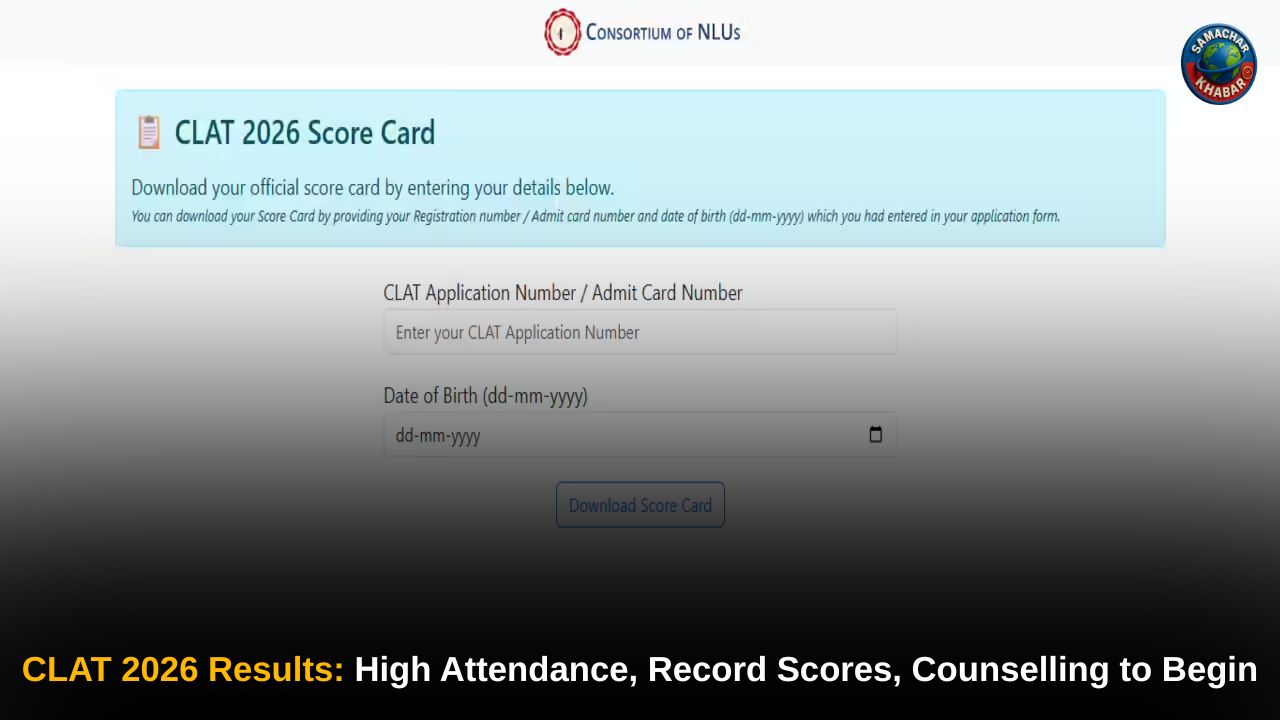On October 29, 2025, the mysterious interstellar comet 3I/ATLAS will make its closest approach to the Sun — a moment that could unlock vital clues about its origin and nature. Discovered in July 2025 by NASA’s ATLAS survey, this comet has behaved in ways that defy conventional cometary science — showing an anti-solar tail, reversing its direction later, and revealing chemical compounds never before detected in a natural comet.
As it nears the Sun, astronomers from NASA, ESA, and observatories worldwide are watching closely to determine what 3I/ATLAS really is — a natural wonder or something far more mysterious.
Key Takeaways: Why Comet 3I/ATLAS Has Captured Global Attention
- Perihelion Date (Closest to Sun): October 29, 2025, at a distance of 1.36 AU — similar to Mars’s orbit.
- Origin: Its hyperbolic orbit confirms it came from beyond our Solar System, making it only the third known interstellar object ever detected.
- Unusual Tail Behaviour: Initially showed an anti-solar tail (facing the Sun), which later reversed direction, baffling astronomers.
- Chemical Mystery: Spectral analysis revealed nickel tetracarbonyl, a compound never observed in natural comets — usually found in industrial refining processes.
- No Threat to Earth: NASA confirms 3I/ATLAS will remain about 270 million km away, posing no risk to our planet.
- Scientific Priority: Space missions like Hubble, Webb, and the Parker Solar Probe are tracking it to study its composition and trajectory.
What Makes 3I/ATLAS Truly Different
Unlike the comets that orbit our Sun periodically, 3I/ATLAS is a one-time interstellar visitor. Its hyperbolic trajectory means it entered our Solar System from another star system and will exit again, never to return. The comet’s unexpected behaviour — such as ejecting gas toward the Sun and later reversing its tail — has stunned scientists who describe it as “breaking the rules of comet physics.”
According to NASA, such anomalies are scientifically invaluable. They could reveal how materials behave under extreme solar radiation and how non-Solar-System objects interact with our Sun’s gravity and radiation pressure.
October 29: A Cosmic Turning Point
The date October 29 marks the comet’s perihelion — its closest approach to the Sun. At this point, 3I/ATLAS will be exposed to around 33 gigawatts of solar energy, enough to trigger massive outgassing or structural changes. Scientists are especially interested in whether this intense heat will alter its speed, rotation, or tail direction once again.
Also Read: Possible Signs of Ancient Life: NASA’s Perseverance Finds Potential Biosignature in Jezero Crater
For astronomers, this day is like a laboratory in space. They will study how sunlight interacts with the comet’s icy surface and what that tells us about the composition of interstellar objects — information that could deepen our understanding of how planetary systems form.
A Harvard Astrophysicist’s Hypothesis Sparks Debate
Harvard astrophysicist Avi Loeb, known for his research on interstellar objects, has proposed a controversial hypothesis. He suggests that if 3I/ATLAS were an artificial object, its “anti-tail” behaviour could represent controlled braking, similar to a spacecraft slowing down using thrust.
Loeb explained that if this were true, the tail reversal near perihelion would be exactly what one would expect from a technological manoeuvre designed to capture a stable orbit around the Sun.
Also Read: Alien Visitor or Cosmic Coincidence? The Astonishing Journey of Interstellar Object 3I/ATLAS
However, NASA and other scientists maintain that no evidence currently supports an artificial origin, though they agree that 3I/ATLAS offers an unprecedented chance to study exotic interstellar chemistry and motion.
What NASA and Other Observatories Are Doing
NASA has mobilized a multi-mission observation campaign. The Hubble Space Telescope, James Webb Space Telescope, and Parker Solar Probe are jointly tracking 3I/ATLAS across different wavelengths — visible, infrared, and ultraviolet.
Simultaneously, ground-based observatories like the Nordic Optical Telescope in the Canary Islands and Gemini South in Chile are monitoring its brightness, tail structure, and chemical composition.
This coordinated effort allows scientists to triangulate the object’s precise position and study its changing light spectrum — a process critical for understanding how interstellar comets differ from those formed within our Solar System.
No Danger to Earth — Only Knowledge to Gain
NASA’s latest orbital data confirms that 3I/ATLAS will not come anywhere near Earth. Its closest approach is projected at about 1.8 astronomical units (AU), or 270 million kilometres away. That’s nearly twice the distance between Earth and the Sun.
Still, the comet’s scientific value is immense. Its passage helps test planetary defense tracking systems, ensuring we can accurately monitor and predict future, potentially hazardous celestial visitors.
Why the Scientific Community Is Excited
For astronomers, 3I/ATLAS is a once-in-a-lifetime opportunity. It provides:
- A chance to study unprocessed material from beyond the Solar System.
- Insight into the formation of other planetary systems.
- Real-time data to refine orbital prediction models.
- Experience for coordinated global observation campaigns essential for future asteroid defense.
It’s not about whether this comet poses a threat — it’s about what secrets of cosmic chemistry and motion it might reveal.
Spiritual Perspective: A Reminder of Universal Order
Beyond science, 3I/ATLAS also invites reflection on our place in the universe. As the comet journeys across space, it reminds humanity of the precision and vastness of creation. According to Tatvdarshi Sant Rampal Ji Maharaj, true knowledge lies in recognizing the Creator’s grand design behind every cosmic phenomenon. The universe is not chaos — it follows divine order.
For spiritual insights on such universal truths, visit www.jagatgururampalji.org or the Sant Rampal Ji Maharaj YouTube Channel.
When the Universe Speaks — Humanity Listens
The story of 3I/ATLAS isn’t about danger or drama — it’s about discovery. This interstellar traveler has come and will go, but the data it leaves behind will help scientists understand the cosmos beyond our Solar System.
As it races past the Sun on October 29, the world will be watching — not in fear, but in wonder — knowing that even fleeting visitors can expand the horizons of human knowledge.
FAQs on Interstellar Comet 3I/ATLAS
1. What is Interstellar Comet 3I/ATLAS?
3I/ATLAS is an interstellar comet from beyond our Solar System, discovered in July 2025, currently being studied by NASA and global observatories.
2. When will Comet 3I/ATLAS make its closest approach?
3I/ATLAS will reach perihelion—its closest point to the Sun—on October 29, 2025, at a distance of about 1.36 astronomical units.
3. Is Comet 3I/ATLAS dangerous to Earth?
No. NASA confirms 3I/ATLAS poses zero threat, staying around 167 million miles from Earth—well outside any impact range.
4. Why is 3I/ATLAS important for scientists?
It helps astronomers study interstellar material, comet chemistry, and refine methods to track potentially hazardous space objects.
5. Can Comet 3I/ATLAS be seen with the naked eye?
No. It’s too faint, with brightness between magnitude 12 and 14, requiring an 8-inch telescope under dark skies for observation.

















